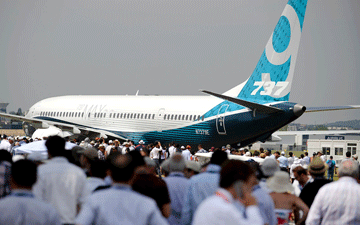
Getty Images
This article was originally published in MarketWatch on April 17, 2019. Ann Skeet is the senior director of leadership ethics at the Markkula Center of Applied Ethics. Views are her own.
The crash of a second Boeing Max 737 jet within several months has moved the airline industry to deploy its regular post-mortem approach following such tragedies — a sound way to explore failures and also raise ethical issues.
The Max 737 scrutiny, and Boeing’s response, recalls a business case when I was in business school 30 years ago. A lot of business schools use the Socratic case method to teach the basics of business in the context of stories the student can remember for many years to come. This case involving an airline, studied while we were learning about the promises that brands make and why they are important, has stayed with me.
During the discourse, my fellow students and I worked on identifying the penultimate promise of this airline’s brand. We had a lot of ideas — on-time arrivals, no lost luggage on the literal end of things; adventure, and expanding horizons, on the more esoteric end.
But as I see it now, we missed the most basic promise any airline should make: Safety.
You board a plane to fly to another place for whatever reason, at whatever time of day or year, and go anywhere in the world. Though you may not tell yourself when you get on the plane that the thing you are most excited about is that you will be alive when the plane lands, when you peel back the onion it’s likely that this matters more than anything else. Because airline safety is universally accepted as true, it represents an unspoken, but critical, brand promise.
We were 90 students in a class with no pressure beyond appearing smart to each other and our professor, in a class where 50% of our grade was determined by class commentary. We had no profit pressures brought on by shareholders, wage and work rules to negotiate with unions, no competitors — there was no reporting of which sections arrived at the correct answer. And, still, we missed it.
We know that both the FAA and the Transportation Safety Board will delve into the black boxes of the downed aircraft to determine how the technology, design, and perhaps the use of AI contributed to the crashes. But who will be looking at the culture in which the 737 Max design was made and executed, and address how to fix that culture so that it doesn’t contribute to other problems in future designs? Here’s what investors and managers alike should understand:
1. Consider culture management a hard skill
The business world has long considered culture to be in the realm of HR and representative of one of the “softer” aspects of management. After all, no one can create a culture or change it alone. Some would argue that it’s inappropriate to focus on the culture at Boeing or the airline industry right now. Those same “some” would be arguing that we need to understand what went wrong with the technology first and foremost.
I argue that examining the industry’s conditions and norms and the go-go culture at Boeing are as critical to ensuring our future safety in the air as is looking at the technology. Recent research I conducted with partners from another Jesuit university in Spain backs this premise.
Culture change management needs to move into the realm of hard skills we teach to business school students and that we demand of corporate leadership. When companies, and the regulations of the industries they are part of, begin to require regular culture assessment, we can strengthen our ability to see that how we are doing things is a critical part of what we are doing and drives business outcomes as much as new technology.
2. Leverage crises as a means to introducing, or re-introducing, ethics to your company
Focusing on culture management in the throes of a crisis may seem like a distraction, but this is exactly the time to do so. Our research revealed certain moments to reinforce ethics in organizations. Such “turning points” — moments of crisis and heightened awareness — offer the people in organizations a golden opportunity to engage leaders and others in the company to identify ethical issues in their work and move to address them.
3. Mission matters, as do the words we use to define it
In Boeing’s case, the company should return to its foundational documents and update them along with their software. The company’s website defines its purpose and mission as “Connect, Protect, Explore and Inspire the World through Aerospace Innovation.” Protect should be listed first. Throughout Boeing’s aspirations, strategy and values statements, it talks about winning, a zero-sum concept at odds with safety. In my observations over the years, companies using the language of winning are more prone to stumble at ethics in glaring ways, damaging their business outcomes.
